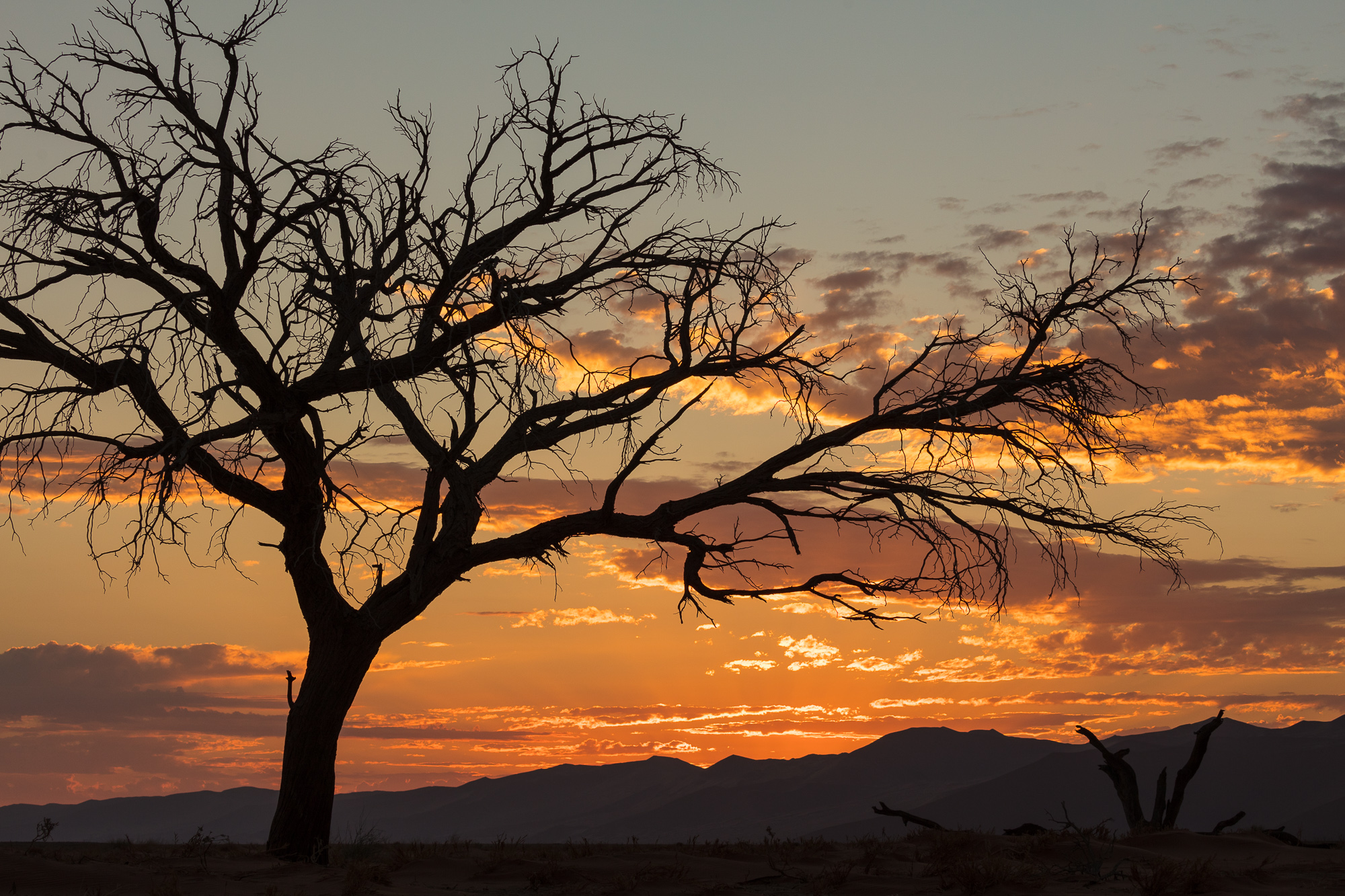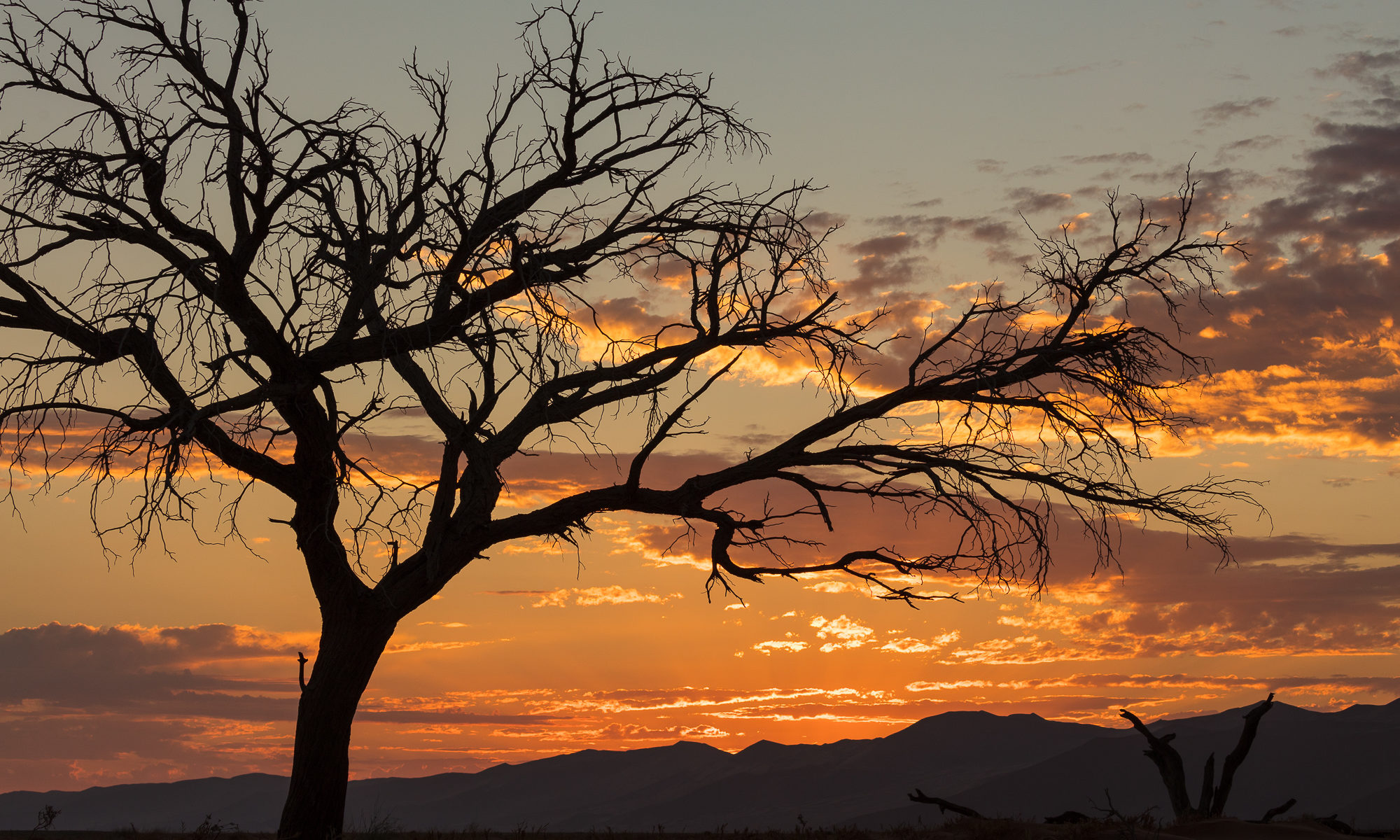I captured this tree silhouette at the peak of a glorious sunset in the heart of the Namib desert. I spent some time with this tree, crafting the photo. I wanted to reduce the tree to a graphic form against the beautiful colors of the sky. Because the tree was reaching to the right, I oriented its trunk to the far left of the photo so that it is reaching into the frame and up and over the distant mountains.
After taking a look on the computer, and doing some basic processing, I was really happy with it. That is until I showed it to a friend, and was met with a frown and shrug of the shoulders. “It doesn’t really do anything for me,” was the response I remember.
Now to give a little bit of background, this friend has a great eye for photography and is certainly not one to heap praise where it is not due. As surprised as I was by the reaction, I knew I needed to pay attention to this critique because of my friend’s impeccable taste. So what went so wrong?

The more time I spent with the photo, the more I began to agree with the review. I finally realized that I was the victim of an age old pitfall of art. I had spent so much effort creating the photo, I was attributing more value to its end result than I should have. Okay, so its not a horrible image. But like all critical photographers, I thought a lot about this fresh perspective. The fine branches of the silhouette are too chaotic and it has a relatively weak subject matter. The colors of the sunset are not enough to hold the main focus of the image.
Since I share many successful photos with you, I thought I’d share a failure. Well, maybe not a failure, but one that leaves me with a “meh” feeling. The lesson here is to seek honest, unbiased feedback for your work. Think about who you go to for a quick ego boost, and who is there to offer a fresh opinion that might just push you to be a better photographer.



